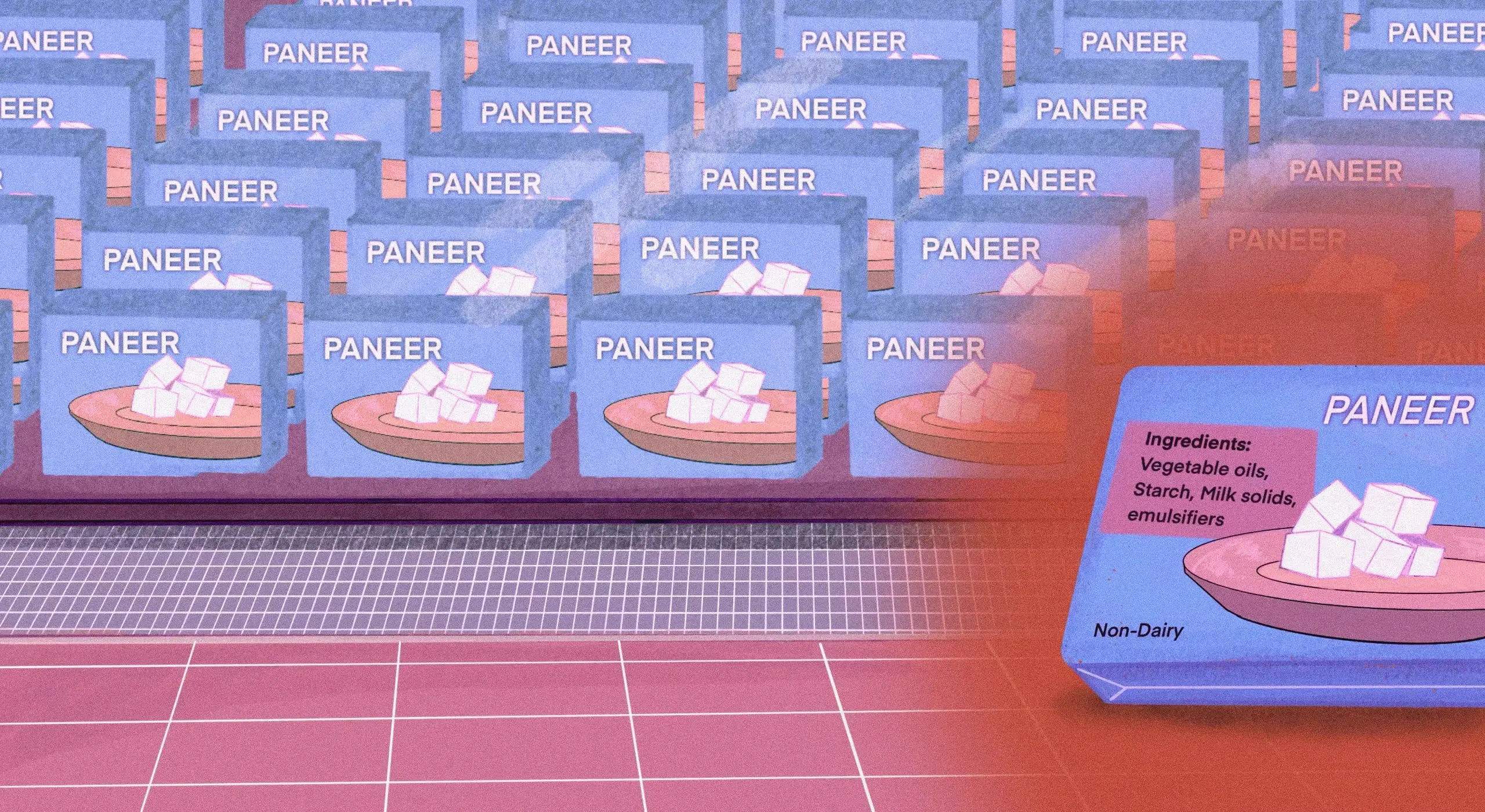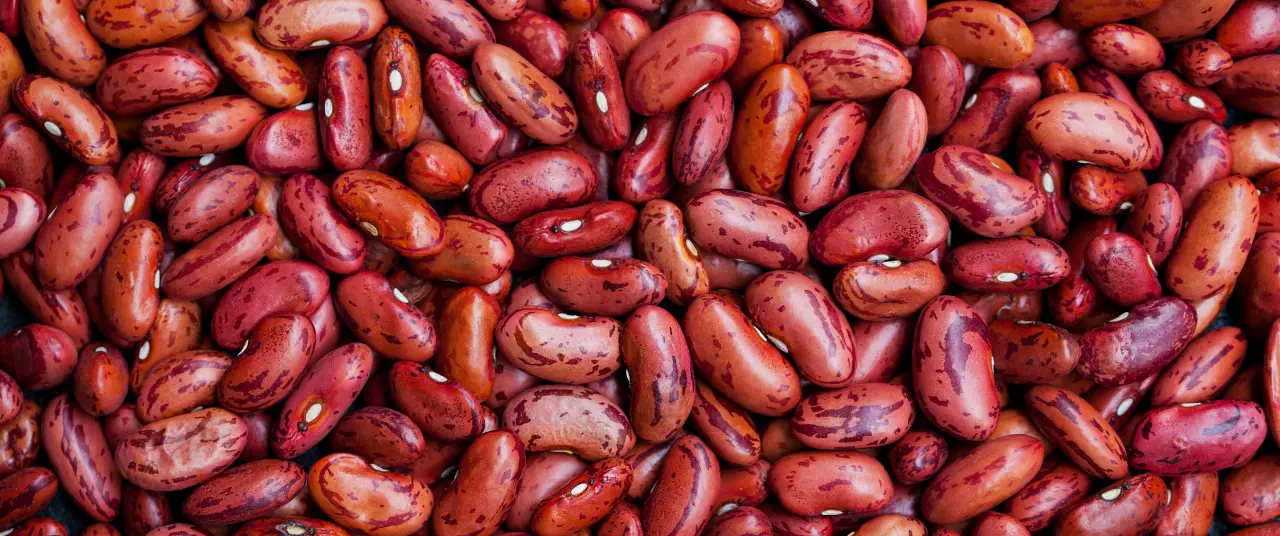India’s protein supply chains remain opaque. Without traceability, the cost and impact of what we eat is invisible






Editor’s Note: From grocery lists, to fitness priorities, and even healthy snacking, protein is everywhere—but do we truly understand it? In this series, the Good Food Movement breaks down the science behind this vital macronutrient and its value to the human body. It examines how we absorb protein from the food we consume, how this complex molecule has a role to play in processes like immunity, and the price the Earth pays for our growing protein needs.
It is a strange kind of uncertainty—and vulnerability—that every morning, many Indians pour milk into their tea without knowing where exactly that milk came from, regardless of whether it is sourced from a cooperative farm or a local vendor. The same tends to be true of other food sources, too, from everyday vegetables, to the whole spices that form the bedrock of many dishes. Unless you purchase your produce from a small business or one that lists the details of the farmer that grew it, chances are you don’t know the origins of the ingredients in your kitchen and on your plate.
The lack of awareness about milk in particular is part of a larger invisible web. The supply chains through which our protein travels are often hidden from view. Attempts to trace that web throw up urgent ethical, environmental, and health questions that merit public attention.
With weak traceability, demand guarantees supply, no matter the risk.
Protein traceability is the ability to track a protein food’s journey across the supply chain, from its source (farm, animal, manufacturer), through processing, packaging, and distribution, all the way to the consumer. It’s about knowing where your protein comes from, how it was produced, and what happened to it along the way. When that chain is opaque, the costs and impacts become invisible too.
The invisible protein economy
In India, protein largely reaches us through three major streams, each with its own supply chain and vulnerabilities: dairy, meat, and plant-based sources.
Globally, regulators mark certain foods as high-risk because of their susceptibility to contamination. The US Food and Drug Administration, for instance, highlights dairy, eggs, and seafood. In India too, milk and milk products are part of state food adulteration tests conducted alongside the Food Safety and Standards Authority of India (FSSAI), making dairy essential to the discussion on protein traceability.
India is the world’s largest milk producer. More than half of India’s milk sales are handled by the unorganised sector—local milkmen, smallholder farms, roadside vendors—outside the organised cooperatives or private dairy companies. Within this informal network, traceability is severely limited. What feed was used, whether hygiene standards were maintained, whether any adulterants were added, all become unknowns. The risk is borne entirely by the consumer.
Across southern India, between 2021 and 2024, a significant percentage of food samples tested have failed safety standards. In Tamil Nadu, roughly 22% of samples in recent years were found adulterated; in Telangana, 15%; in Kerala, 13%. These figures include protein-rich staples like milk, paneer, yoghurt, and even some processed plant-based alternatives. On average, that is one in seven food items failing safety norms, meaning the risk is not marginal—it is systemic.
This is prevalent across the country. In early April 2025, the Food Safety and Standards Authority of India (FSSAI) found 47 contaminated paneer and khoya products across eateries in Noida. Reports like these are part of the larger worrying trend of ‘fake paneer’ being stocked on departmental shelves. In Maharashtra, over 30,000 litres of milk were destroyed in a single operation after routine testing showed high levels of salt, which is usually added to mask dilution or increase volume. In Punjab, authorities destroyed more than 4,200 kg of paneer and 4,000 kg of milk, all declared unfit for human consumption. These raids highlight a deeper reality: the market keeps running even when food is adulterated and its source unclear. With weak traceability, demand guarantees supply, no matter the risk.
By documenting where food comes from and under what conditions it was produced, traceability systems create leverage for fairer pricing, safer work environments, and more just recognition of smallholder contributions.
Beyond dairy, the invisibility of protein supply chains runs deep. India is the world’s second-largest exporter of beef, yet much of the domestic trade still runs through unlicensed slaughterhouses and municipal slaughterhouses—informal hubs where live animals are sold and slaughtered on site, and where traceability is virtually absent. Consumers rarely know what feed the animal consumed, whether it was administered antibiotics, or how it was slaughtered. This opacity is not just about animal welfare; it is also about antimicrobial resistance. Studies show that rampant, undocumented antibiotic use in poultry and livestock in India contributes to the country’s growing AMR burden, with residues often finding their way into meat and milk. The overuse of antibiotics to promote cattle growth or prevent disease in crowded, unhygienic conditions accelerates the spread of resistant bacteria—making common infections harder to treat and posing risks far beyond the dinner table.
Plant-based proteins, meanwhile, are no less affected. Pulses, soy, millets, and oilseeds are cornerstones of Indian diets, but their origins are often impossible to trace unless they are tied to organic certifications or GI-tagged value chains. Was the soybean in your protein bar grown organically, in a farm in a neighbouring state using chemical fertilisers, or imported from Brazil, where deforestation-linked soy is common? Without traceability, the consumer cannot know. This invisibility matters because it blurs the environmental costs. India’s pulse crops, for instance, are water-efficient compared to rice or sugarcane, but large-scale soybean cultivation elsewhere may carry deforestation risks that get hidden once processed into flour, bars, or powders.
Supplements and protein powders complicate the picture further. Whey protein usually comes from industrial dairy waste streams (byproducts of large-scale industrial processing of milk like leftover liquids from making cheese); soy isolates could be imported from half a dozen countries before reaching Indian markets. Cases of adulteration are well documented. Melamine, for example, has been used globally to falsely inflate protein content in powders. In India, the FSSAI has flagged multiple supplements for mislabelling or containing undeclared ingredients. Yet, consumers picking up a jar from a gym shop or ordering online have little way to verify sourcing.
Also read: Is there an ‘ideal’ amount of protein that must be consumed?
The hidden costs
The absence of traceability magnifies risks across categories. First, health: adulterants like detergents, starch, and even formalin have been detected in protein foods in India. For instance, in 2020, a Consumer Guidance Society of India study claimed that over 79% of milk samples in Maharashtra may be contaminated. Second, environmental: untracked supply chains mean the water use, land degradation, and greenhouse gas emissions tied to protein production remain invisible. In dairy, government surveys suggest about 3% of milk—roughly 5 million tonnes—gets wasted due to poor cold chain infrastructure, electricity shortfalls, or lack of transport. In livestock, undocumented feed and antibiotic use drive environmental and health externalities that no consumer can detect.
And finally, the ethical dimension: farmers and workers at the lowest rungs of these supply chains often operate without bargaining power. In the unorganised dairy segment, producers are vulnerable to middlemen who can depress prices. In meat, lack of regulation means poor labour conditions and inhumane treatment of animals often escape scrutiny. In plant-protein supply chains, smallholders cultivating millets or pulses rarely benefit from premium pricing because their crops are not marketed as traceable or sustainable. Greater traceability cannot, on its own, solve these inequities, but it can make them visible. By documenting where food comes from and under what conditions it was produced, traceability systems create leverage for fairer pricing, safer work environments, and more just recognition of smallholder contributions. Traceability, in this sense, is not just about consumer safety—it is also about producer justice.
Also read: More isn’t always better: Are you overdosing on protein?
Towards greater transparency
There are some signs of progress. Internationally, organisations are piloting blockchain or QR code tracking systems, particularly in dairy and organic foods, that allow consumers to scan and see farm-to-store data. A single scan of a QR code might tell you which farm the milk was collected from, whether antibiotics were detected, when it was processed, and how it was transported. For meat, it could include details on the feed given and the slaughterhouse where it was processed; for plant proteins, the district of cultivation and whether chemical inputs were used. This could also enable customers to imagine what conditions the people responsible for the produce may be working under. Globally, similar systems already allow buyers of coffee or chocolate to trace not just the origin, but the farmer collective that produced it.
To build safe, fair, and sustainable protein markets, India needs systemic transparency: regulators must strengthen audits and infrastructure; producers must adopt traceability as a value proposition; and consumers must demand more than marketing claims.
Yet these remain exceptions, not the norm. Without wider infrastructure—cold chains, independent labs, farmer training—traceability cannot scale beyond pilot projects. Cold chains are not just about reducing spoilage—they ensure that batches remain intact and unmixed, so their origin can be reliably traced. Independent labs provide the verification points that give credibility to traceability claims, checking for contaminants or confirming source data without relying solely on company-run facilities. And farmer training is crucial: producers need to know how to tag, separate, and document their outputs, otherwise traceable systems break down at the very first step of the chain. These infrastructural requirements come with costs—and stakeholders aren’t always capable of or willing to invest in traceability.
India also already has some regulatory provisions in place. The FSSAI requires food businesses to maintain records of their suppliers and distributors to enable product recalls in case of adulteration, mislabelling, or disease outbreak, and mandates batch coding and labelling for packaged foods. But enforcement is uneven, and most of the unorganised sector, from local dairies to wet markets, operates outside this framework.
Traceability, then, is not a luxury but a necessity. To build safe, fair, and sustainable protein markets, India needs systemic transparency: regulators must strengthen audits and infrastructure; producers must adopt traceability as a value proposition; and consumers must demand more than marketing claims. When you pour milk into your tea, cook dal for lunch, or mix a scoop of whey into your post-gym shake, you deserve to know more than its price. You deserve a protein you can trust: where it came from, how it was produced, and what is hidden along its path. Until the supply chain ceases to be invisible, these ethical, environmental, and health costs remain embedded in what we eat—and too often, paid by those least able to see them.
Also read: Why your body may not be optimising the protein you eat
{{quiz}}
References






.avif)




